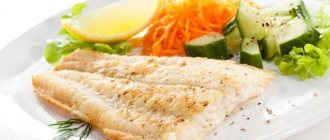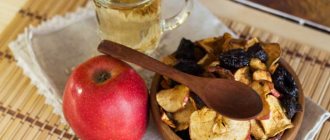Without the regular intake of certain substances into the body, our life would simply be impossible. One of these vital elements for us is hemoglobin. Its presence in the human body determines how well many processes will proceed in our organs and systems that ensure life. What is hemoglobin, why do we need it and in what quantities - you can find the answers to these questions in this article. We should also study where we can get it for our body.
The role of hemoglobin in the body?
Hemoglobin is a protein that contains iron and transports it throughout the body. It is found in red blood cells (red blood cells) and its main function is to transport oxygen to tissues and internal organs, as well as to move carbon dioxide from tissues and organs to the lungs during respiration. If there is insufficient hemoglobin and, accordingly, iron in the body, this can cause oxygen starvation and anemia.
The body is not able to synthesize iron on its own, so we must regularly receive it through food.
Let's take a closer look at what tasks are performed by hemoglobin in our body:
- Responsible for the delivery of oxygen to tissues, muscles and organs.
- Participates in the process of hematopoiesis.
- Maintains a constant pH inside red blood cells and, as a result, in the blood as a whole.
- Performs a blood buffering function - when carbonic acid accumulates in the medium, its proton attaches to free hemoglobin and a reduced one is formed.
- In tissues it acts as an alkali, preventing acidification of the blood.
- In the lungs it acts as an acid, preventing the blood from alkalizing after the release of carbon dioxide.
- Necessary for children for proper cognitive development.
- Supports normal functioning of the immune system.
With a sufficient amount of hemoglobin in the body, we feel good and have a healthy appearance. However, if the hemoglobin level is below normal, a person may notice various ailments and, subsequently, may develop a pathological condition such as anemia (anemia), which is characterized by a reduced level of red blood cells in the blood and oxygen starvation of tissues.
Lack of hemoglobin in the body can be expressed in the form of the following symptoms:
- frequent weakness in the body;
- fast fatiguability;
- increased irritability;
- decreased appetite;
- low blood pressure;
- frequent headaches;
- dizziness;
- fainting;
- dyspnea;
- pale skin;
- weakened immunity;
- body temperature 37-37.5°C for no apparent reason and in the absence of colds;
- impaired sense of smell;
- increased heart rate (tachycardia);
- brittleness and slow growth of nails;
- increased hair loss and dullness;
- dry mouth;
- restless legs syndrome.
If you notice any of the above symptoms, you should check your hemoglobin level in your blood and, if necessary, increase it. In order to correctly monitor the amount of hemoglobin in the body, you need to know what its level is normal. It depends on the gender and age of the person, so the daily dose is calculated individually. The optimal value for iron consumption is:
- for men per day 10 mg;
- for women - 15 mg;
- for pregnant women, the dose of hemoglobin per day should be increased to 30 mg;
- for children from 7 months to one year is 8.5 mg;
- for children from 1 to 2 years old is 5 mg.
NUTRITION FOR HIGH BLOOD CHOLESTEROL LEVEL
Recommendations of the Federal State Budgetary Institution "Research Institute of Nutrition"
Consultative and Diagnostic Center "Healthy Nutrition"
Cardiovascular diseases (coronary heart disease, arterial hypertension) are extremely widespread and are the leading cause of death for men over 35 years of age and for all people, regardless of gender, over 45 years of age. The leading risk factor for these diseases is elevated cholesterol levels, low-density lipoprotein cholesterol, the development of which, in addition to heredity, is facilitated by obesity, eating disorders, low physical activity, alcohol, diabetes mellitus, postmenopausal women, etc.
Excessive consumption of animal fats, refined carbohydrates, and excess calorie intake negatively affect metabolism: they contribute to an increase in the level of cholesterol and triglycerides in the blood, and increase blood clotting. On the contrary, vegetable fats rich in polyunsaturated fatty acids (PUFAs) have a beneficial effect on lipid metabolism.
Nutrition principles:
The total fat content should be about 70-80 g/day. (20-30 g of this amount comes from vegetable oils).
Limit foods containing large amounts of cholesterol (offal, fish caviar, egg yolk, fatty meats, poultry, high-fat dairy products, etc.)
Use sources of PUFAs of the w3 family - sea fish (mackerel, sardine, Iwasi herring, halibut, etc.) and vegetable oils (linseed, soybean, rapeseed, mustard, sesame, walnut, etc.), which reduce elevated levels of lipids in the blood serum ( especially triglycerides).
Eat more plant-based foods, such as grains, legumes, vegetables, fruits, nuts, which are a source of plant protein (mainly legumes).
Use products containing vitamins B6 (soybeans, bran bread, seafood, etc.), C (rose hips, black currants, strawberries, gooseberries, oranges, apples, cabbage, sweet red peppers, parsley, dill, green onions, etc. ).
It is necessary to limit the table salt diet to 3-5 g per day.
Eat foods rich in potassium (dried apricots, raisins, prunes, peaches, bananas, apricots, pineapples, rose hips, potatoes, cabbage, eggplants), magnesium (soybeans, oatmeal, buckwheat, millet cereals; walnuts, almonds; bran), iodine, especially with increased blood clotting (seaweed, squid, scallop, shrimp, mussels, etc.).
The total volume of free fluid should be 1.5 liters per day. The distribution of the diet throughout the day should be uniform, the number of meals should be 5-6 times a day. The last meal is no later than 2-3 hours before bedtime. Ensuring correct technological processing of products and medicinal dishes (removal of extractive substances, exclusion of fried, canned foods, hot spices, table salt for culinary purposes).
Depending on the degree of increase in blood cholesterol levels (moderate or severe), recommendations for the consumption of foods have varying degrees of restriction of some of them (steps 1 and 2).
A set of products for hyperlipidemia (steps 1 and 2)
| Diet steps | Recommended | Limit | Not recommended |
| Fats 1st stage | Reduce consumption by 1/3 | Vegetable oil or soft margarine up to 30-40 g per day | All animal fats, butter, hard margarine |
| 2nd stage | Reduce consumption by 1/2 | Vegetable oil or soft margarine up to 10-20 g per day | All animal fats, butter, hard margarine |
| Meat and poultry 1st stage | Skinless chicken no more than 180 g per day | All types of meat without fat no more than 1-3 times a week | Brains, liver, tongue, kidneys, sausage, frankfurters, ham, goose, duck |
| 2nd stage | Skinless chicken no more than 90 g 2 times a week | All types of meat without fat no more than 90 g 2 times a week | Brains, liver, tongue, kidneys, sausage, frankfurters, ham, goose, duck |
| Eggs 1st and 2nd stage | Egg white | No more than 2 whole eggs per week | |
| Fish 1st and 2nd stages | Any variety at least 2-3 times a week | Crabs and shrimp | Fish roe |
| Dairy products 1st stage | Per day up to 2 glasses of low-fat milk or kefir or 0.5 glasses of cottage cheese | Whole milk, cheese 1-2 times a week | Full-fat milk, sour cream, cream, full-fat cottage cheese, cheeses, ice cream |
| 2nd stage | Per day up to 2 glasses of low-fat milk or kefir or 0.5 glasses of cottage cheese | Whole milk, cheese 1-2 times a month | Full-fat milk, sour cream, cream, full-fat cottage cheese, cheeses, ice cream |
| Fruits and vegetables stage 1 and 2 | All fruits and vegetables up to 2-3 glasses per day, legumes 0.5-1 glass per day | Potatoes with vegetable oil once a week | Vegetables and root vegetables cooked in fat, preserves, jams, marmalade |
| Grains 1 and 2 stages | Rye, bran bread, oatmeal and buckwheat porridge with water, no fat | White bread, pastry, pasta 1-2 times a month | Baking, baked goods |
| Drinks, dessert 1st and 2nd stages | Mineral water, tea, coffee drink, fruit juices without sugar | Alcohol no more than 20 g (in terms of alcohol), sugar no more than 2-3 teaspoons per day; marshmallows, marshmallows, marmalade – once a month | Chocolate, candy |
Persons with high blood cholesterol levels and excess body weight should limit or exclude bread, sugar, cereals, pasta and potatoes from their diet. In agreement with the doctor, various contrast (fasting) days (fish, cottage cheese, apple, vegetable, etc.) are used 1-2 times a week.
Features of increasing hemoglobin
To increase the amount of hemoglobin in the body, first of all, it is recommended to eat foods rich in iron. However, in addition to it, the use of copper is mandatory, since iron-containing products alone cannot always cope with the task. Sometimes the solution is to take medications that contain iron.
To quickly and for a short period of time increase hemoglobin in the body, you can take the following drugs:
- Iron sulfate.
- Iron gluconate.
- Ferrous fumarate.
There are also drugs that last for a longer period:
- Tardiferon.
- Ferrograd.
- Heferol.
- Ferrogrademet.
- Fefol.
All cases of hemoglobin deficiency are individual and have different causes and symptoms, so it is recommended to first check its level in your body and consult a doctor to decide whether there is a need to increase iron in the blood. The best option for preventing hemoglobin deficiency is proper nutrition with the consumption of a sufficient amount of iron-containing foods, and only then, if necessary and on the recommendation of a doctor, can you take medications.
It is also important to correctly combine foods that contain iron - this way it will be absorbed more quickly and easily. There are products that increase bioavailability, these include:
- foods rich in copper;
- citric and malic acid;
- ascorbic acid;
- folic acid;
- sugar;
- sulfur-containing amino acids.
Special attention should be paid to the peculiarities of the increase in hemoglobin in women’s bodies during pregnancy. Anemia associated with iron deficiency is more common in pregnant women. This condition that occurs during this period is very dangerous - it can cause premature birth or miscarriage, increases the risk of toxicosis, placental insufficiency and can cause fetal developmental disorders. To avoid these dangerous consequences, during pregnancy a woman must carefully monitor the level of hemoglobin in her blood, consume as many foods fortified with iron as possible and, of course, be under the supervision of a doctor.
Diet for high hemoglobin
High hemoglobin levels can indicate many diseases.
If you have high hemoglobin, you should follow a certain diet. Find out which foods to include in your diet if you have high hemoglobin and what to avoid. What is hemoglobin Hemoglobin is a protein found in red blood cells, which consists of globin (protein) and heme (iron compound). Blood turns red due to iron atoms. Hemoglobin transports oxygen and carbon dioxide throughout the body. Men's blood contains more hemoglobin than women's blood. Hemoglobin norms: for men 135-160 g per liter of blood, for women 120-140 g per liter of blood.
Human blood circulation diagram
Why does hemoglobin increase? An increased level of hemoglobin may indicate diseases such as:
- increase in the level of red blood cells in the blood,
- blood thickening,
- intestinal obstruction,
- burns,
- cardiopulmonary failure,
- diabetes,
- Chronical bronchitis,
- pneumonia.
Smoking causes a lack of oxygen in the blood, so hemoglobin increases. But elevated hemoglobin does not always mean an illness or a deviation from the norm. Hemoglobin increases after intense physical exertion, that is, in athletes and people who engage in active sports. Also for rock climbers and pilots, because they spend a lot of time at altitude. Elevated hemoglobin levels are normal for people who live in mountainous areas. Nutrition for high hemoglobin
Basic principles of nutrition for high hemoglobin:
- drink as much fluid as possible,
- reduce consumption of meat, offal, proteins,
- eat plant proteins: soy, legumes,
- it is allowed to eat fish and seafood in small quantities,
- the basis of nutrition is porridge,
- you should eat as many vegetables as possible - raw or cooked,
- fruits should be consumed.
The diet for people with high hemoglobin does not exclude iron-containing foods. The diet should be selected taking into account the factors due to which the level of hemoglobin in the blood has increased.
You Should Eat the Right Dietary Iron Different foods contain dietary iron, which is divided into heme and non-heme iron. These two types of iron differ in their absorption in the human body. Heme iron is easily absorbed, while non-heme iron is absorbed slowly. Therefore, if you have high hemoglobin, you should eat foods that contain non-heme iron to prevent iron from being absorbed into the blood. Heme iron is found in animal products, and non-heme iron is found in fruits, vegetables, grains, and nuts.
Healthy foods for high hemoglobin You need to eat foods containing non-heme iron that help normalize hemoglobin levels: rice, whole grain bread, tofu, beans, spinach, grapes, apricots, nuts. Non-heme iron content in food Soybeans (boiled) 100 g - 5.14 mg of iron, lentils (boiled) - 4 mg, spinach (boiled) - 3.57 mg, tofu 100 g - 6 mg, boiled chickpeas 100 g - 3 mg.
Liquid is a cure for high hemoglobin. Using plain water with the addition of lemon juice, you can thin the blood, thereby bringing hemoglobin back to normal. If you have elevated hemoglobin, you should drink 2-3 liters of liquid per day. You can drink water, tea (black, green), compotes (without sugar), but exclude juices and carbonated drinks. Dehydration can lead to an increase in hemoglobin, so you should drink plenty of fluids. Dairy products are rich in calcium, so they interfere with the absorption of iron into the body.
Foods that should be avoided Some foods should be completely excluded from the diet if you have elevated hemoglobin, because they most often contain heme iron and can be harmful to the body:
- Alcoholic drinks should be completely avoided. Because when iron and ethyl alcohol are combined, harmful elements are formed that disrupt the functioning of the liver. Alcohol also improves the absorption of iron, which leads to an increase in hemoglobin in the blood. Alcohol breakdown products stimulate hematopoiesis, so people who frequently drink alcohol have increased hemoglobin levels.
- Fish and seafood are rich in heme iron, so you need to say no to raw, dried and red fish. The body's condition will worsen due to eating raw fish (this applies to lovers of sushi and rolls). Because bacteria found in unprocessed fish cause infectious diseases in people with high iron levels in the blood. You can eat well-cooked fish or seafood.
- Sweets and sugar-containing foods should be excluded from the diet. Cakes, buns and pastries do not contain heme iron, but eating them promotes the absorption of iron even from foods containing non-heme iron.
- It is recommended to completely exclude red meat from the diet. It is allowed to eat lean meat. You should also avoid all types of liver.
- Red fruits, vegetables and berries should be excluded because they are rich in substances that stimulate an increase in hemoglobin. You should not eat apples due to their high iron content.
If your hemoglobin level is elevated, you should consult your doctor to determine how best to normalize hemoglobin in your blood, if necessary.
List of products with hemoglobin
In order for the body to remain healthy and not suffer from oxygen starvation, it is necessary to regularly eat various foods rich in iron. There are many recipes and balanced diets that will be both pleasant and beneficial for you. In order to be able to create such a diet most competently, you need to know which foods will allow your body to replenish its hemoglobin reserves.
Fruits, vegetables and berries
Fruits
- Apples. This fruit is the best preventative against anemia. Apples, rich in iron, saturate the body with hemoglobin and are especially useful for children and pregnant women.
- Pomegranates are very rich in iron. In addition, pomegranate contains about 15 amino acids, it is rich in vitamins K, C, B9 and B6, as well as minerals such as phosphorus, potassium, and copper.
- Peaches. In addition to containing iron, peaches are also rich in vitamins A and C.
- Melons. One serving can provide almost 100% of the daily requirement for vitamin A, 95% for vitamin C, 1% for calcium, 2% for iron and 5% for vitamin K.
- Persimmon. For iron deficiency anemia, persimmon can significantly increase the level of hemoglobin in the blood. It also contains many vitamins, especially A, C and B, microelements: iron, calcium, iodine, potassium, phosphorus, magnesium, manganese.
Vegetables
- Red beetroot. It is one of the most reliable and ancient remedies in the fight against anemia. It is especially useful for women.
- Carrot. In addition to iron, this vegetable contains phosphorus, calcium, vitamins A, E, C, K.
- Broccoli. Broccoli contains copper, cobalt and iron - substances involved in the process of hematopoiesis and enhance the production of red blood cells. It also contains: omega acids, potassium, sodium, magnesium, from, folic acid, chlorophyll, tocopherol, beta-carotene and other beneficial substances.
- Tomatoes. In addition to iron, tomatoes are rich in vitamins C and K and are the main source of the antioxidant lycopene. They improve the functioning of the gastrointestinal tract and normalize metabolism.
- Potato. This vegetable contains vital microelements such as iron, potassium, calcium, phosphorus, zinc, copper, manganese, starch and vitamin C.
- Spinach is very rich in iron, zinc, calcium, potassium, magnesium, sodium, vitamins: B1, B2, B6, C, A, PP, P, E, D2, K.
Sample menu
Increased hemoglobin poses the greatest danger to men and women during pregnancy and menopause due to the risk of blood clots and clogged arteries.
Therefore, it is for these population groups that the diet in the first days of the week should be strictly vegetarian, without animal proteins.
Breakfast:
- semolina milk porridge;
- bran bread - 50 g;
- butter - 10 g;
- hard cheese;
- coffee with milk.
Porridge and coffee can be sweetened with sugar , and if desired, add vanillin or cinnamon (at the tip of a knife).
1st snack - baked apple or 100 g of natural yogurt.
Dinner:
- vegetarian rassolnik with bran bread (50 g);
- cabbage stewed with vegetable oil with carrots, apple;
- soft-boiled or poached egg;
- baked potato;
- Ceylon black tea with milk and sugar (optional).
2nd snack - pear or banana, baked for 10 minutes. at a temperature of 180 degrees, or a glass of kefir.
Dinner:
- cottage cheese;
- cranberry or quince jam;
- fruit jelly or cranberry juice.
At night - a glass of kefir with a spoonful of jam.
The amount of fermented milk products in the afternoon can be increased , as they contain calcium, which interferes with the absorption of iron.
After two weeks, a blood test is done . If the hemoglobin level has decreased, then men and pregnant women are allowed to eat 100 g of white poultry meat for lunch. Women during menopause should continue their diet by increasing the amount of dairy products and cooked vegetables.
In women of reproductive age (not pregnant), hemoglobin rarely increases. This can only be due to excessive stress or illness. In this case, the diet is prescribed by the attending physician or a professional nutritionist.










